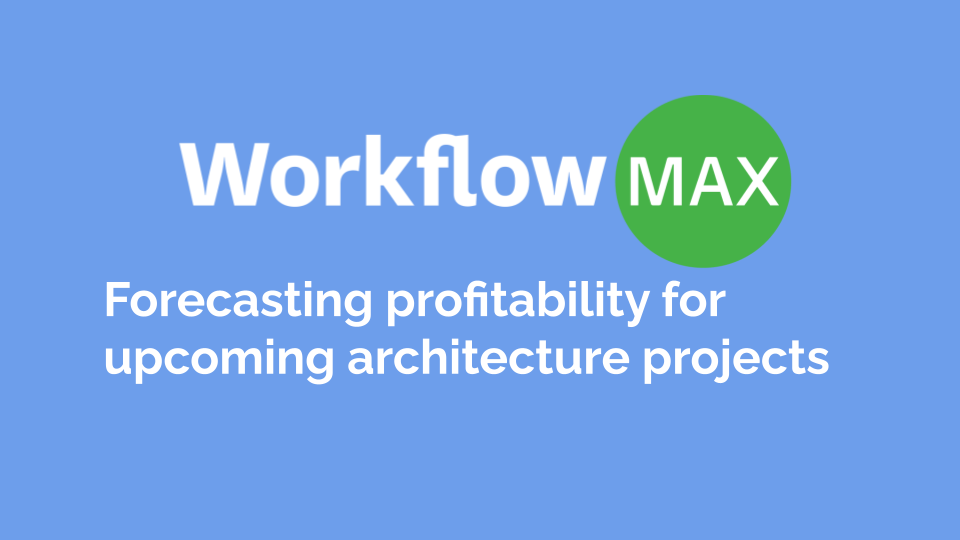TL;DR: Profitability forecasting is essential for ensuring architecture projects remain financially viable from start to finish. WorkflowMax empowers firms to estimate revenue, allocate costs, and precisely monitor cash flow. Key components include real-time budgeting, contingency planning, and work-in-progress tracking. By leveraging historical data and flexible forecasting tools, firms can spot financial risks early, make informed decisions, and align project performance with strategic goals. Accurate forecasting also improves stakeholder communication and builds long-term economic stability.
Profitability forecasting is crucial for architecture projects. It helps firms analyse revenue streams, estimate costs accurately, and evaluate project performance throughout its lifecycle. Understanding these elements ensures projects stay viable and profitable.
Collecting and analysing accurate data refines financial predictions. With precise information, firms make better decisions that support economic stability.
Past project data creates realistic forecasts that guide planning. This helps identify financial risks early, allowing teams to adjust strategies to maintain profitability.
Components of effective profitability forecasting
Effective profitability forecasting for architecture projects involves several key components.
- Revenue Estimation: Predict future income based on market trends and project pipelines. This helps in setting realistic financial expectations.
- Cost Forecasting: Accurately project expenses related to materials, labour, and overhead. For best results, follow our three tips to estimate project labour costs more accurately. This ensures you’re prepared for all financial outlays.
- Cash Flow Analysis: Monitor the timing of cash inflows and outflows. This helps maintain liquidity and ensures you can meet your financial obligations.
- Contingency Planning: Identify potential financial risks and set aside contingency funds. This provides a buffer against unexpected costs.
- Work-in-Progress Schedules: Track project progress and financial health. These schedules give you a clear view of how projects are advancing financially.
- Continuous Budgeting and Variance Analysis: Regularly update budgets and analyse variances. This helps control costs and manage resources effectively.
By integrating these components, you create reliable financial forecasts that guide your projects to success.
Addressing challenges in revenue and cost allocation
Irregular cash flows and project delays can wreak havoc on architecture projects. These challenges complicate revenue and cost allocation, making it crucial to adopt effective strategies.
- Irregular Cash Flows: Architecture projects often face fluctuating cash inflows, impacting liquidity. Implement decay curves to predict cash flow trends over time, helping manage financial resources effectively.
- Project Delays: Delays disrupt timelines and budgets. Use scenario analysis to anticipate potential setbacks and prepare contingency plans, ensuring projects stay on track financially.
- Equitable Overhead Distribution: Distributing overheads fairly is essential for accurate cost allocation. Dynamic allocation methods adjust overheads based on real-time project data, ensuring fairness and precision. Efficient resource management plays a crucial role in controlling these costs.
Integrating flexible forecasting tools is key. These tools adapt to changing project needs, enhancing the accuracy of financial predictions. WorkflowMax's powerful reporting tools provide insights into productivity and profitability, supporting informed decision-making.
Utilise historical data for benchmarking. Past project insights guide accurate forecasting, reducing risks and improving efficiency. This proactive approach boosts financial stability and project success.
Optimising decision-making through accurate forecasting
Accurate forecasting plays a vital role in decision-making for architecture projects. Real-time data analysis helps firms compare actual outcomes with projections, allowing for proactive adjustments. This ensures projects remain on track and within budget.
Financial forecasting supports pipeline management by providing insights into future revenue and expenses. By understanding these dynamics, firms can allocate resources effectively and prioritise projects that align with their strategic goals.




